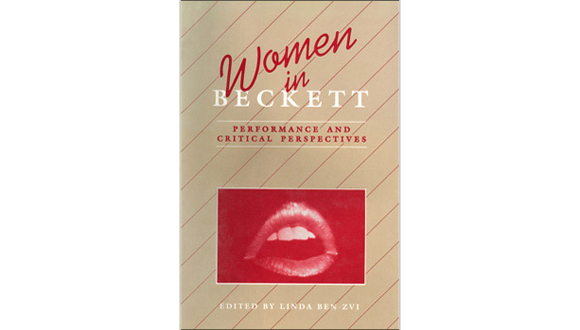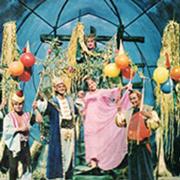Women in Beckett: Performance and Critical Perspectives
Edited by Linda Ben-Zvi
Urbana: University of Illinois Press, 1992
Edited by Linda Ben-Zvi
Urbana: University of Illinois Press, 1992
How does an actress prepare, physically and vocally, to portray Winnie of Happy Days, a woman buried in a mound from the waist down? Or May of Footfalls, whose mother's voice drives her to pace the floor obsessively? Or Mouth, reduced to a spotlighted orifice, who babbles in Not I about birth, solitude, silence, fear, guilt, and loss?
Samuel Beckett's women are tormented, tormenting, intriguing. Enveloped in bulky coats or grey tatters, missing body parts or even bodies, they find themselves in impossible positions from which they must cope. It is equally difficult for those who read, act, and watch them to fathom these complex figures. Women in Beckett provides an aid; it is the first study devoted exclusively to the important and elusive question of gender in Beckett's fiction and drama. Twelve distinguished actresses describe the process involved in creating Beckett's women for the stage, including vocal drills, the emotional and physical strain of the actresses' work, and the effect of Beckett's women on audiences. They also recount Beckett's stage directions:
Billie Whitelaw: "We sit and look into each other's eyes and say the lines ... He would keep reminding me, 'No color ... Let it be boring.’ You have to have courage to work that way."
Dame Peggy Ashcroft: "He would answer questions like 'Why does she gabble as she does at a certain point?' by saying 'Because it has to go fast there’"
Delphine Seyrig: "To play Beckett you have to have a real capacity for precision in delivery. You have to know how to talk and to act mechanically and precisely as if for a Bach partite.”
Women in Beckett also examines literary criticism of Beckett's career, running the gamut from Martin Esslin's analysis of the themes of sex and love common in European fiction to Carol Helmstetter Cantrell's fascinating feminist reading of Molloy, from Ruby Cohn's beautifully lucid prose and solid analysis of the drama to Elin Diamond's commentary on Beckett and the French feminists.
"Linda Ben-Zvi's original and useful collection will find a responsive readership among Beckett critics, students of modem drama, and anyone concerned, as they should be, with feminist issues. This anthology brings something new and exciting to the field of Beckett studies." - Enoch Brater, author of Beyond Minimalism and Why Beckett
"I recommend highly Women in Beckett. The volume is a sensitive, intelligent, and thought provoking collection that makes a valuable contribution to Beckett studies, to women's studies, and to contemporary theater." - J. E. Dearlove, author of Accommodating the Chaos: Samuel Beckett's Nonrelational Art
Linda Ben-Zvi is a preeminent Beckett scholar. She is president of the Beckett Society, author of a well-received study of the playwright, and a consultant for the NEH-funded Public TV series, "The Beckett Project:' A professor of English and theater at Colorado State University at Fort Collins, she is the author of articles on Beckett and other theater personalities in numerous books and journals. She is completing a biography of the American playwright Susan Glaspell.





